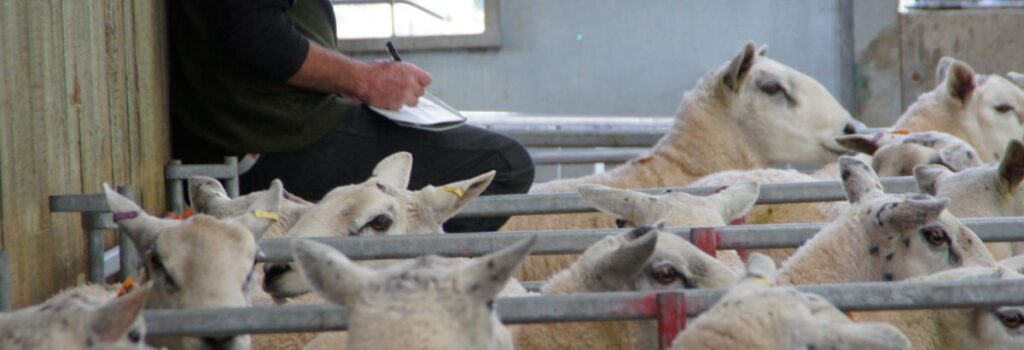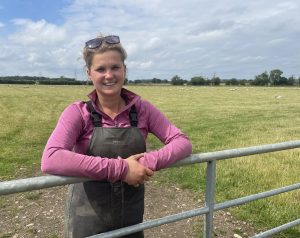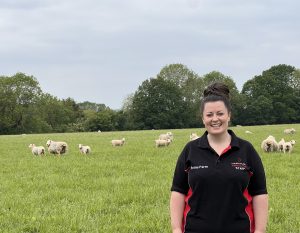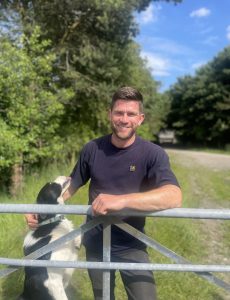We were mentioned in an article in the Scottish Farmer, written by John Elliot who attended our ram sale at Springhall Farm, Kelso.
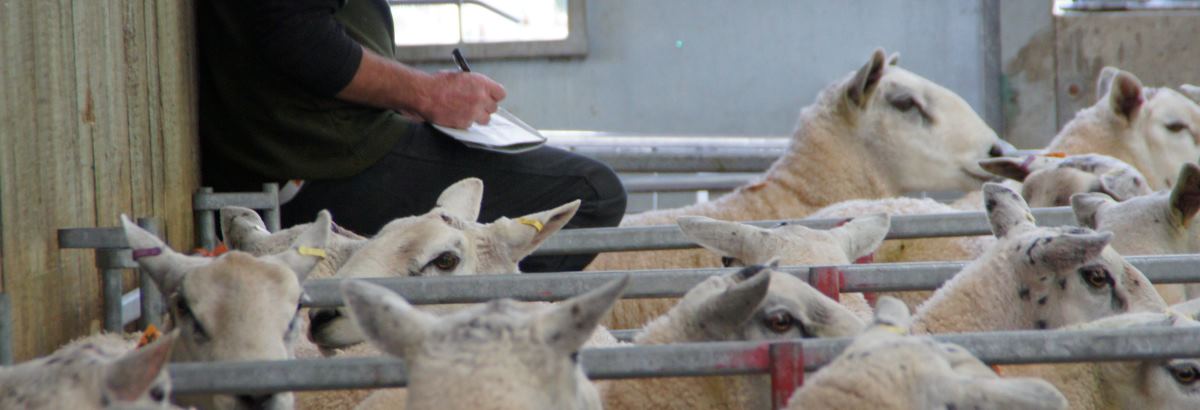
We’re glad that he had an enjoyable afternoon and was encouraged by our breeding ethos and how the sale was run. Have a read below:
JOHN Elliot, my great grandfather, was quite a whizz kid. Starting from Blackhaugh, an upland farm near Galashiels, by the end of his life he owned or leased 10 farms totalling hundreds of thousands of acres in Sutherland, Easter Ross, Selkirkshire, Berwickshire, Dumfries-shire and Galloway.
When he retired in 1932, his home farm, Meigle, was sold to Sandy Hogg, later of Birkenside, Earlston. Sandy rated the old man highly and often quoted advice he had received from him to me. A particular pearl of wisdom was that he advised Sandy not to bother with the tup trade.
Sandy heeded his advice. None of my great grandfather’s descendants paid the slightest attention. Since we were kids, tup sales were massively exciting. Much more than lamb or draft ewe sales because in our farming world the status of the farmer, the shepherd and the flock depended on how the ram sale had gone. I have attended three ram sales in the past month. The format of the Lanark Texel sale has changed little in a century and my ancestors, while marvelling at our ability to follow the trade anywhere in the country on a smart phone, would slot in easily.
Kelso Ram Sale, too, where my grandfather sold Scotch Half-bred tups, has not changed much. But, the ram sale, run by Innovis – who claim to be the leading supplier of performance-recorded forage reared rams in UK – at Springhall, Kelso, couldn’t have been more different.
Unlike every ram sale I have previously attended, the shearling rams were untrimmed and had never been fed concentrates.
In a further attempt to iron out environmental influences, all except those from one vendor, had been reared on one farm since weaning the previous year. They were the result of large group breeding schemes in UK and New Zealand. Some were bred for maternal characteristics and some were terminal sires. All were bred to thrive on grass or forage crops, lamb outside with minimal supervision and produce good commercial lamb. The names of the breeds – Aberfield, Abertex, Abermax, Aberblack, Primera and Highlander – were new to me.
Forty traits are recorded in the elite nucleus flocks and EBVs for growth, muscle depth, fat cover, lambing percentage, maternal ability, ewe weight, lambing ease and lamb vigour for each breed were shown in the sale catalogue.
The lambs were given an index calculated on these traits and ranked ‘Elite’, ‘Select’ and ‘Commercial’. Those of similar status were penned together for buyers to inspect pre-sale. The ‘Elite’ rams were pre priced at £950, the ‘Select’ at £750 and the ‘Commercial’ at £600. When they entered the sale ring, if more than one buyer fancied a ram it was auctioned with bidding raised by £25 per bid.
The rams had been ranked entirely on their index, so there was some variation in phenotype within each rank. My own observation was that, whatever their index, conformation and power still influenced their sale price. An Abermax, a terminal breed, made £1700 and a Highlander, a maternal breed, made £1750, while 28 of the 127 rams forward made more than £1000 and after that prices did not differ much from the pre-set price.
Some will see this novel way of breeding and marketing rams as the way forward, while others will continue to select on eye appeal.
Converting each camp to the opposing viewpoint is like trying to teach a pig to whistle. It wastes your time and annoys the pig. I enjoyed the afternoon and am encouraged that an alternative now exists. While ram sales may change, other things never do.
Although the issues are different, political wrangling has remained the same throughout history. Political crises have always happened and in retrospect we usually wonder what all the fuss was about. Looking back over the decades, the years tend to merge into each other. For me an exception would be the year 1979. At Rawburn back then, we sold two suckled calves, an Angus and a Charolais, for more than £1000 each at Reston calf sale.
It doesn’t seem much now, but they were the highest priced calves in the country that year. Both did well in the show ring subsequently, with the Angus becoming supreme champion at the Great Yorkshire Show.
A few weeks previous to the calf sales, I had bought a North Country Cheviot ram for £8000. He cost almost double the existing breed record price, was the best sheep I have ever owned and bred really well. On the debit side, I acquired my first overdraft as a result of eye watering prices for hay in the previous winter. When interest rates rose to 17% in years to come, that overdraft became a heavy burden.
The winter of 1979 followed a very wet, dull summer and ranked with 1947 and 1962-63 as the worst in the 20th century. We had endless days like the ‘Beast from the East’ from New Year through to late May.
Nationally, it was known as ‘The Winter of Discontent’ as the unions were doing everything humanly possible to bring the country to its knees by destroying successive governments. On May 4, 1979, I had spent the morning with two inspectors from DAFS – as it was then – looking at hill drains. As we ate lunch, the results of the previous days General Election were coming through on the television. It looked increasingly likely that the country would have its first ever female Prime Minister.
At the far end of the same table sat Joe Brogan, the last of the itinerant Donegal men who appeared on the doorstep looking for work at hay, harvest or singling turnips.
At the other end, we talked away about the pending seismic political changes and voiced strong opinions about our political masters. Joe, a man of few words who had been hitherto silent, looked up from his mince and tatties and with some gravitas pronounced: “They take a bit of sortin’ out.”
